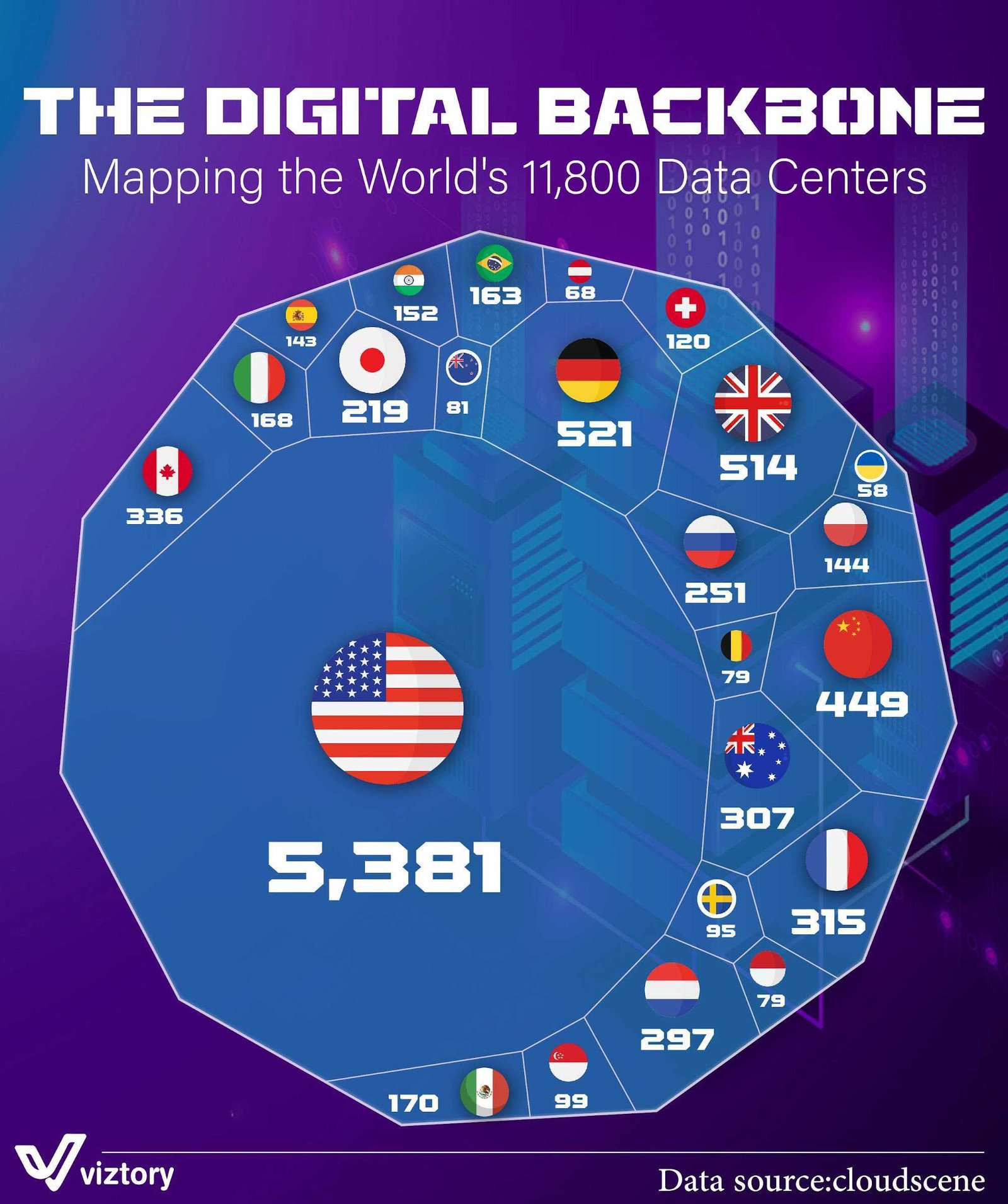THE DIGITAL BACKBONE
-
Mar, Tue, 2025
Introduction
In a world increasingly driven by cloud computing, artificial intelligence, and big data, data centers form the core of digital infrastructure. The infographic titled “The Digital Backbone” visualizes the global distribution of 11,800 data centers, revealing not just numbers but insights into how countries are positioned in the ongoing digital race.
Global Leaders in Data Infrastructure
The United States leads by a wide margin with 5,381 data centers — nearly half of the world’s total. This dominance reflects the country’s deep integration with tech giants like Amazon, Google, and Microsoft, who rely heavily on massive server infrastructure to power global services.
Other key players include:
- Germany: 521
- United Kingdom: 514
- China: 449
- Canada: 336
- France: 315
These countries have made strategic investments in tech ecosystems, regulatory support, and renewable energy — all critical to maintaining a sustainable and efficient digital infrastructure.
Hidden Strengths and Emerging Players
While the top spots are occupied by major economies, the chart also reveals the growing significance of countries like:
- Mexico (170)
- Brazil (163)
- India (168)
These emerging markets are rapidly scaling their data capabilities to meet the demands of expanding digital populations and growing tech industries.
Why Data Centers Matter
Data centers are the physical foundation of everything we do online — from streaming videos and making Zoom calls to executing financial transactions. As digital transformation sweeps across industries, reliable data infrastructure is no longer optional; it’s essential.
Data centers:
- Ensure low-latency services
- Enable cloud computing scalability
- Secure and store vast amounts of sensitive information
- Support AI training and deployment at scale
Geopolitical and Economic Impact
The geographic distribution of data centers is more than just numbers; it represents digital power. Countries with higher data center concentrations can:
- Host more services locally
- Reduce dependency on foreign data routing
- Strengthen data sovereignty
- Attract global tech investments
This has made data centers a matter of national interest, with governments offering incentives to attract tech infrastructure investments.
Analysis
This visualization reveals a sharp contrast between developed and developing nations. The dominance of the U.S. shows the concentration of digital infrastructure in the West, raising questions about access, equality, and control in the global digital economy. Meanwhile, countries in Africa, Southeast Asia, and parts of Eastern Europe show significant room for growth.
The rise of green data centers — powered by renewable energy — is also influencing how and where new infrastructure is being built, pointing toward a future of sustainable digital expansion.
Conclusion
The Digital Backbone is more than a snapshot of data centers — it is a map of global digital power. As the world accelerates toward deeper digital dependence, countries with robust data infrastructure will shape the rules of engagement, innovation, and influence. Investing in data centers isn’t just a tech move — it’s a strategic imperative for national growth, digital security, and future-ready economies.

